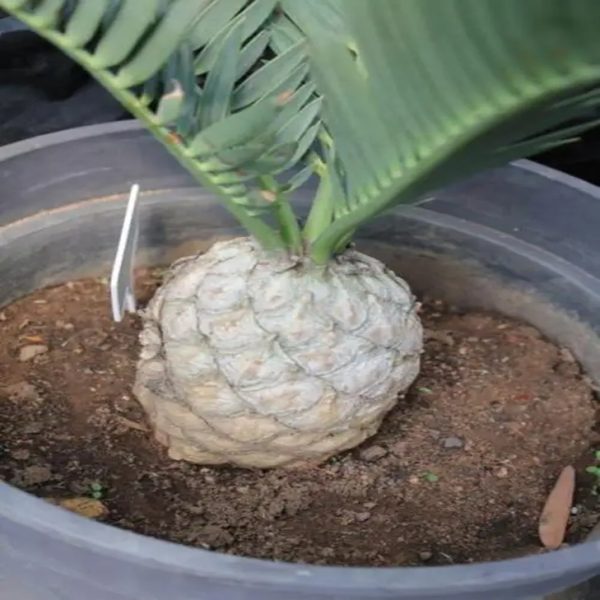Encephalartos princeps
(“Princeps” means “chief” or “prince” in Latin — and it totally lives up to the name)
Quick Overview
Appearance
This species is all about drama and elegance — with a silvery-blue vibe that sets it apart in any landscape.
- Leaves:
- Up to 2 meters long
- Silvery-blue to bluish-green, depending on sun exposure and age
- Leaflets are long, narrow, and sickle-shaped, often pointing upwards or slightly twisting
- Leaves arch gracefully, giving it a bold, upright form
- Trunk:
- Typically above-ground and can reach up to 2–3 meters tall
- Single or sometimes multi-stemmed with old leaf bases forming a textured, rugged trunk
Cones
- Dioecious (male and female plants are separate)
- Male cones: Long and narrow, bluish-green
- Female cones: Chunkier, often with a powdery coating
- Cone color can range from green to bluish-gray — not as flashy as E. ferox, but striking in their own way
Habitat & Ecology
- Native to dry, rocky hillsides and semi-arid scrubland in the Eastern Cape
- Adapted to full sun, strong winds, and low water availability
- Often found growing in shale or sandstone outcrops
Cultivation & Care
- Light: Full sun is best to bring out that classic bluish leaf tone
- Soil: Excellent drainage required — prefers rocky or sandy loam
- Water: Low water needs; very drought-tolerant once established
- Cold Tolerance: Can handle mild frost
- Growth Rate: Slow, but steady with proper care
- Landscape Use: Ideal for xeriscaping, rock gardens, or as a bold focal point in tropical-dry gardens
️ Conservation Status
- Protected under CITES Appendix I — wild collection is illegal
- Threats include overcollection and habitat degradation
- Nursery-grown specimens are legal and encouraged to reduce pressure on wild populations
Why It’s Special
- That icy-blue foliage? Insta-worthy.
- It’s like a living sculpture — symmetrical, clean-lined, and ancient
- Makes a perfect contrast plant next to greener cycads or tropicals

Reviews
There are no reviews yet.